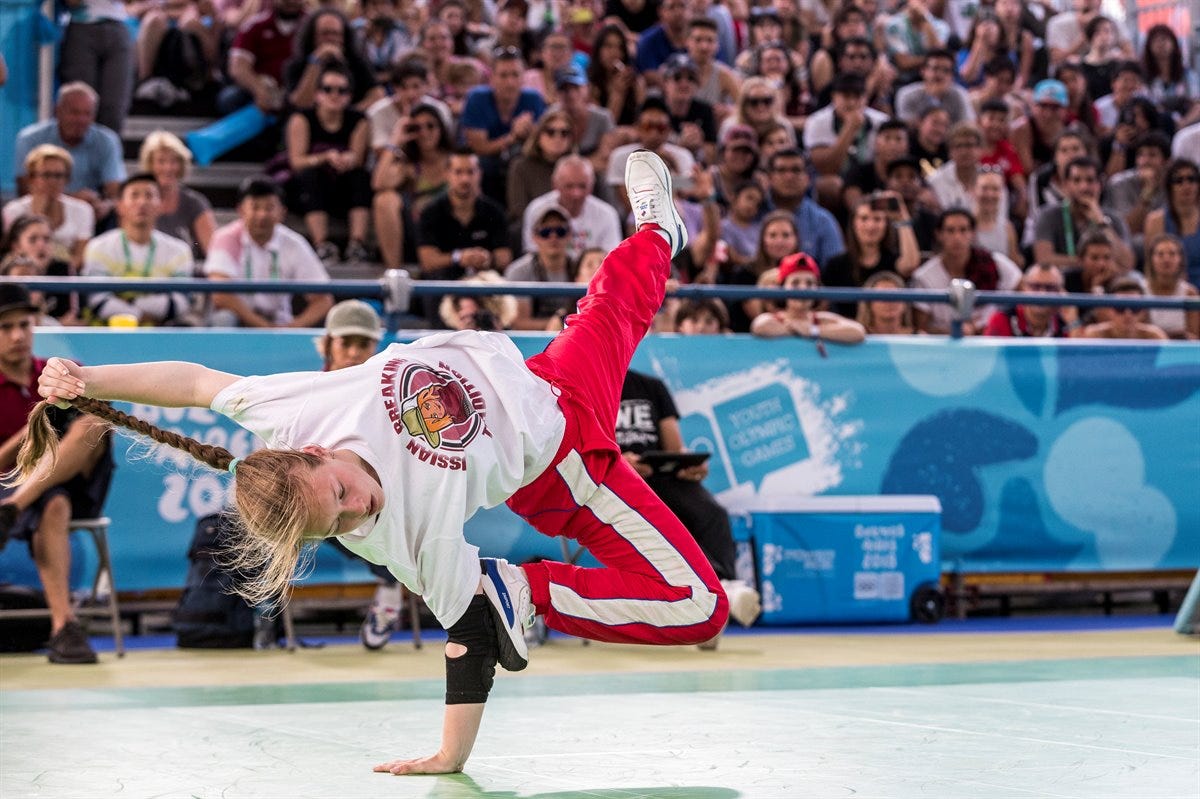Understanding the Olympics Breaking Schedule

The Olympic Games are a global spectacle that captivates billions of viewers worldwide. Behind the scenes, a meticulously crafted schedule ensures the smooth flow of events, accommodating the needs of athletes, coaches, and fans alike. This schedule, often referred to as a breaking schedule, is a complex tapestry of time slots, event groupings, and logistical considerations.
The Importance of the Olympic Breaking Schedule
The Olympic breaking schedule plays a crucial role in the success of the Games. It provides a framework for athletes to prepare, compete, and recover, while also ensuring that fans can enjoy the events in a timely and organized manner.
- Athlete Preparation: The schedule allows athletes to plan their training, rest, and competition routines effectively. It provides a clear understanding of when they will compete, giving them ample time to prepare physically and mentally.
- Coach Management: Coaches rely on the schedule to strategize their athletes’ performance, including training schedules, recovery plans, and competition tactics. The schedule provides a roadmap for coaches to optimize their athletes’ performance.
- Fan Experience: The schedule ensures that fans can plan their viewing experience, knowing when and where to watch their favorite events. It also allows for a balanced distribution of events across different time zones, ensuring that viewers around the world can enjoy the Games.
Structure of the Olympic Breaking Schedule, Olympics breaking schedule
The Olympic breaking schedule is typically structured in a daily format, with events grouped into sessions and categorized by sport. Each day’s schedule is carefully designed to maximize efficiency and minimize conflicts between events.
- Daily Schedules: Each day’s schedule is divided into multiple sessions, often spanning from morning to evening. These sessions may include preliminary rounds, qualifying events, finals, and medal ceremonies.
- Event Groupings: Events are grouped together based on sport, discipline, and gender. This helps to ensure that fans can follow their preferred events and athletes throughout the Games.
- Time Zones: The schedule takes into account the time zones of different participating countries and broadcasters, ensuring that the Games can be enjoyed by a global audience.
Factors Influencing the Olympic Breaking Schedule
The creation of the Olympic breaking schedule involves a complex interplay of factors, including venue availability, athlete safety, and broadcast considerations.
- Venue Availability: The schedule must accommodate the availability of venues for different sports. This includes considering the capacity of each venue, the time required for setup and teardown, and the potential for overlap between events.
- Athlete Safety: The schedule must prioritize athlete safety by allowing for sufficient rest periods between events and ensuring that athletes are not required to compete in multiple events on the same day.
- Broadcast Considerations: The schedule must consider the needs of broadcasters, ensuring that key events are scheduled during peak viewing hours in different time zones. This also includes ensuring that the schedule is conducive to live coverage and replays.
Analyzing the Impact of Breaking Schedules on Competition
The Olympic Games are a global spectacle, showcasing the pinnacle of athletic achievement. The way events are scheduled, however, can significantly impact athlete performance and the overall experience. This section delves into the various ways breaking schedules influence competition.
Impact of Different Breaking Schedules on Olympic Sports
The impact of breaking schedules varies greatly across different Olympic sports. Here’s a breakdown:
- Endurance Sports: Athletes in endurance sports, such as marathon running and cycling, often benefit from a more spread-out schedule. This allows for adequate recovery time between events, preventing fatigue and maximizing performance. For example, a marathon runner might compete in a qualifying event for the marathon and then have a few days to rest and prepare for the actual marathon event.
- Technical Sports: Sports like gymnastics and diving require precision and focus. A concentrated schedule can be advantageous for these athletes as it allows them to maintain their peak mental and physical state. However, too much pressure can also lead to mistakes. A good example is a gymnast who has to compete in all four apparatus in one day, needing to be at their peak throughout the day.
- Team Sports: Team sports, like basketball and soccer, involve multiple athletes with varying strengths and weaknesses. A well-balanced breaking schedule ensures that all players have adequate time to recover and prepare for their respective roles. However, it’s also crucial to maintain team cohesion and momentum, which can be challenging with a spread-out schedule.
Advantages and Disadvantages of Concentrated vs. Spread-Out Schedules
There are both pros and cons to concentrated and spread-out Olympic schedules.
- Concentrated Schedules:
- Advantages:
- Heightened excitement and media attention.
- Allows athletes to focus on a limited number of events, potentially enhancing performance.
- Easier for spectators to follow the competition.
- Disadvantages:
- Increased pressure on athletes, potentially leading to burnout or injury.
- Limited recovery time for athletes, especially in endurance sports.
- May disadvantage athletes who compete in multiple events.
- Advantages:
- Spread-Out Schedules:
- Advantages:
- Provides athletes with more time for recovery and preparation.
- Reduces pressure and stress on athletes.
- Allows for a more diverse range of events to be included.
- Disadvantages:
- May lead to a decline in overall excitement and media coverage.
- Difficult for spectators to follow the competition.
- May require more travel and logistics for athletes and officials.
- Advantages:
Examples of Breaking Schedules Influencing Athlete Performance
The impact of breaking schedules on athlete performance has been evident in past Olympic Games.
- 2012 London Olympics: The concentrated schedule for swimming events led to a high level of excitement and media attention, but also contributed to a number of athletes struggling with fatigue and injury.
- 2016 Rio Olympics: The spread-out schedule for track and field events allowed athletes more time to recover between competitions, potentially leading to better overall performances.
Exploring the Future of Olympic Breaking Schedules

The Olympic Games, a global spectacle of athletic prowess, are constantly evolving. With the advent of new technologies and shifting viewer preferences, the traditional format of Olympic breaking schedules is ripe for reinvention. This section delves into potential future scenarios, examining how technological advancements could reshape the Olympic experience for athletes, fans, and organizers.
Designing a Future Olympic Breaking Schedule
A future Olympic breaking schedule could be designed to cater to the evolving needs of stakeholders. The following considerations are crucial:
- Increased Flexibility: The schedule should accommodate athletes’ individual needs and training schedules. This could involve allowing athletes to compete in multiple events across different days, enabling them to optimize their performance.
- Personalized Viewing Experience: With the rise of streaming platforms, fans should have the option to create their own personalized viewing schedules. This could involve creating customized feeds that prioritize specific events or athletes, enhancing engagement and viewer satisfaction.
- Integration of New Technologies: Incorporating emerging technologies like augmented reality (AR) and virtual reality (VR) could offer immersive experiences for fans. AR could provide real-time data and insights during events, while VR could create simulated environments for spectators to experience the Games from unique perspectives.
Impact of New Technologies on Olympic Breaking Schedules
The integration of new technologies presents exciting opportunities to enhance the Olympic experience.
- Live Streaming and On-Demand Content: Live streaming platforms allow fans to access events from anywhere in the world. On-demand content provides flexibility, allowing viewers to catch up on missed events at their convenience.
- Interactive Viewing Experiences: Technologies like AR and VR can create interactive experiences for fans. For instance, viewers could use AR to overlay data and statistics on live events, while VR could allow them to experience the Games from the perspective of an athlete.
- Enhanced Athlete Performance Analysis: Technologies like wearable sensors can provide real-time data on athlete performance, allowing coaches and trainers to make informed decisions. This data can also be used to create personalized training programs and improve overall performance.
Challenges and Opportunities of Adapting Olympic Breaking Schedules
Adapting Olympic breaking schedules to meet evolving needs presents both challenges and opportunities.
- Balancing Tradition and Innovation: Maintaining the core values and traditions of the Olympic Games while embracing innovation is crucial. Striking a balance between preserving the essence of the Games and incorporating new technologies is a delicate task.
- Ensuring Accessibility and Equity: The integration of new technologies should be inclusive, ensuring that all fans, regardless of their location or technical capabilities, can access the Games. Addressing digital divides and ensuring equitable access to technology is essential.
- Protecting Athlete Welfare: The use of technology should not compromise athlete welfare. It is crucial to ensure that the integration of new technologies is done responsibly and ethically, prioritizing athlete safety and well-being.
Olympics breaking schedule – The Olympics, a global spectacle of athletic prowess, demands a meticulously crafted schedule to ensure smooth transitions between events. This intricate scheduling requires robust technological support, mirroring the advancements seen in other sectors. Consider, for example, the evolution of costco membership card scanners , which have transitioned from basic swipe cards to sophisticated biometric authentication.
Similarly, the Olympics rely on sophisticated software and hardware to manage the complex flow of athletes, officials, and spectators, ensuring that every event runs on time and without disruption.
The Olympic Games, a spectacle of athletic prowess, often encounter unexpected disruptions. The demanding schedule, with its intricate balance of events and athletes, can be prone to changes. Similar to the recent Dunkin’ Donuts boycott rumble , which arose from consumer dissatisfaction, the Olympic schedule can be affected by unforeseen circumstances, leading to adjustments and potential frustration for both athletes and spectators.
These changes, however, are often necessary to ensure the smooth operation of the Games and the safety of all involved.

